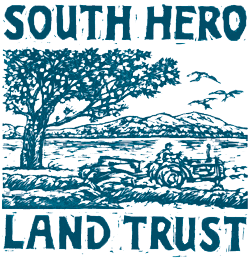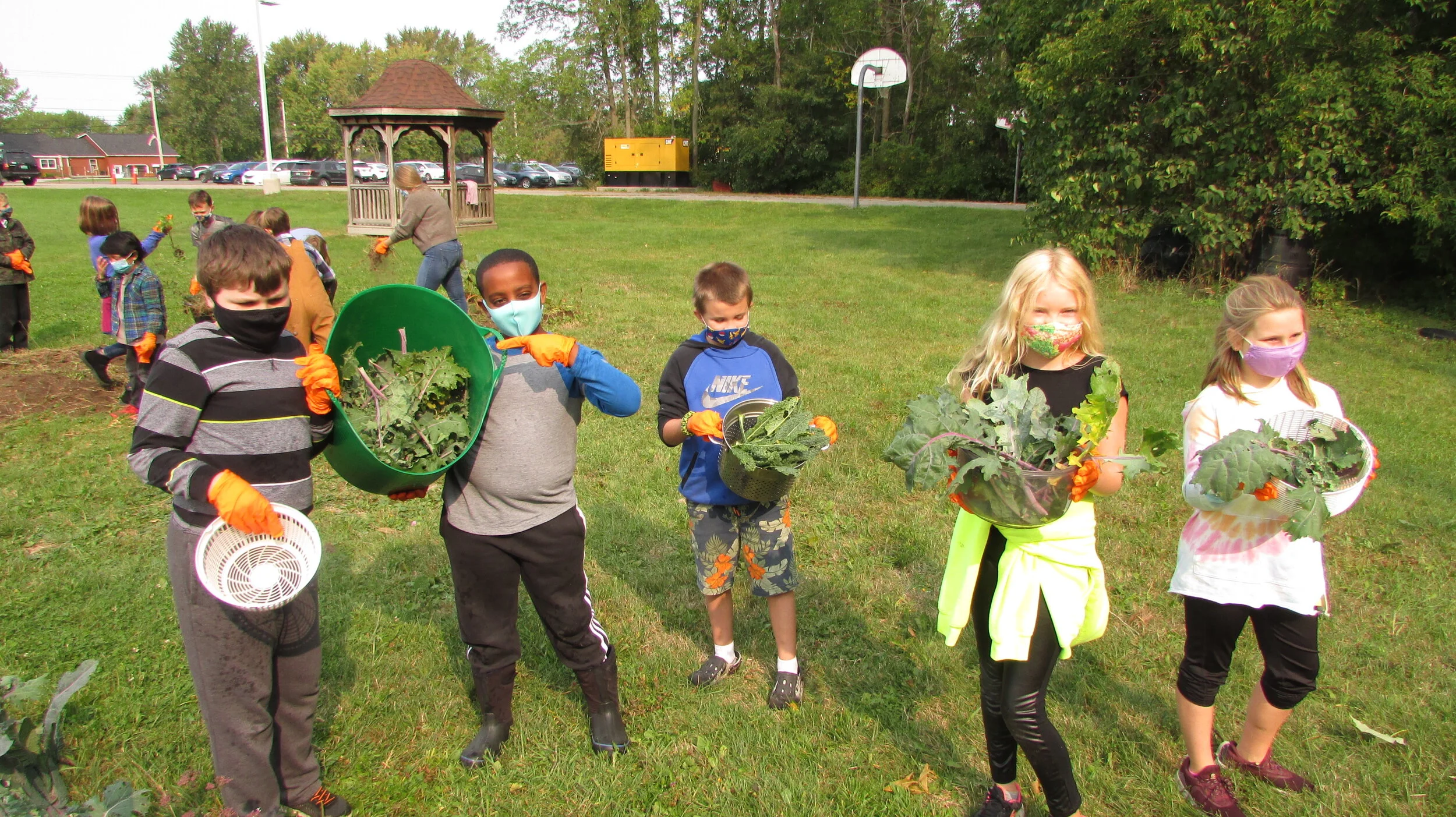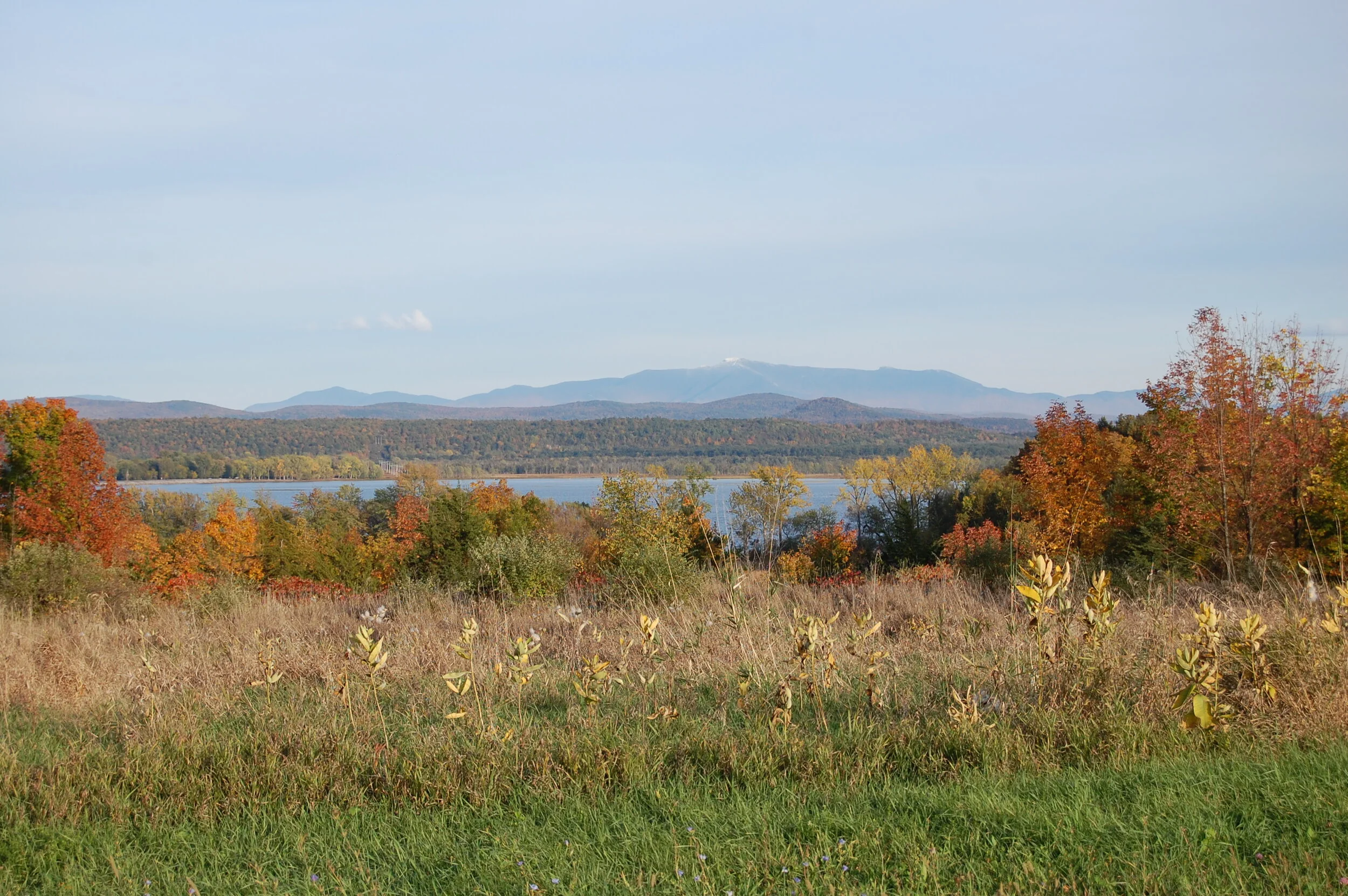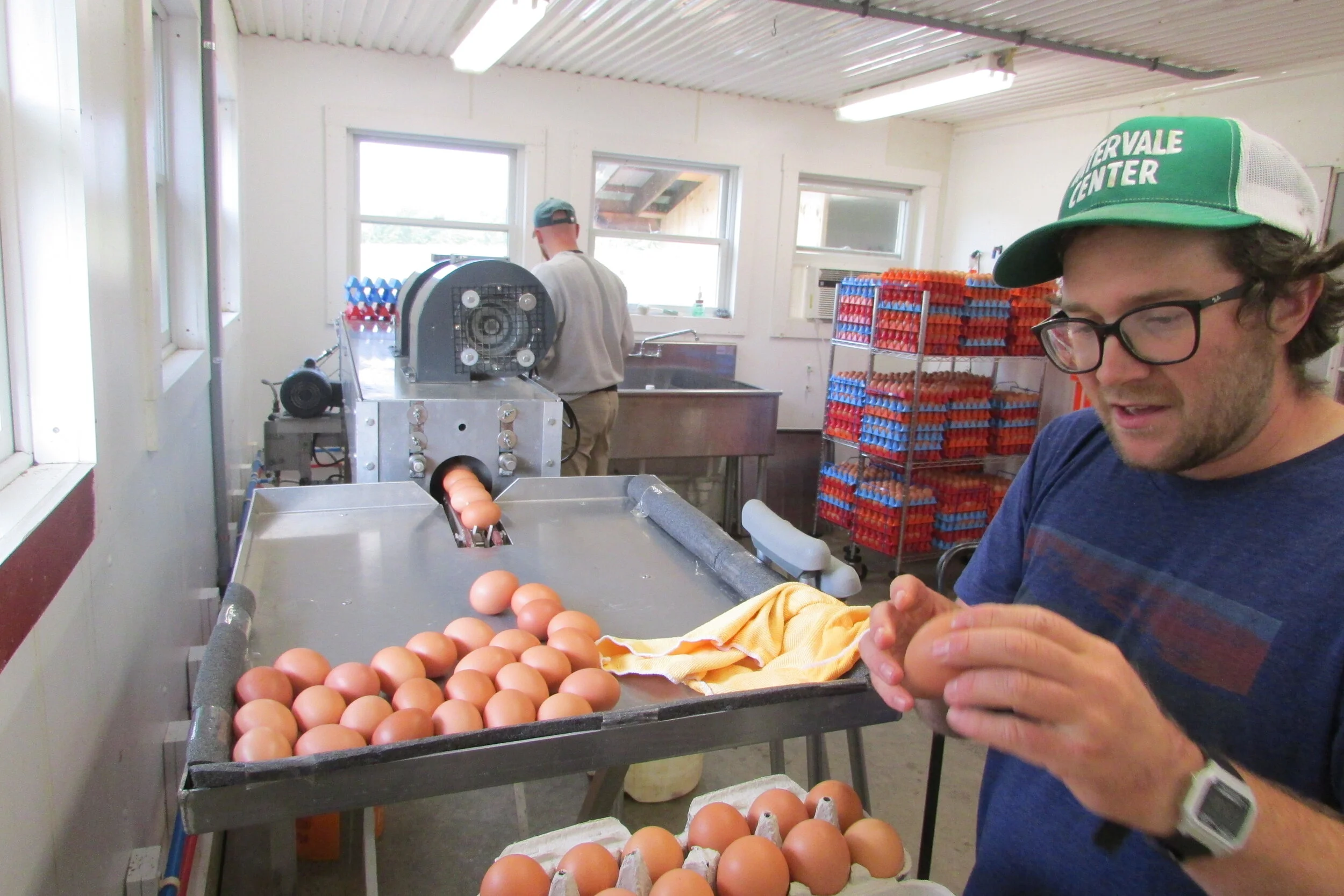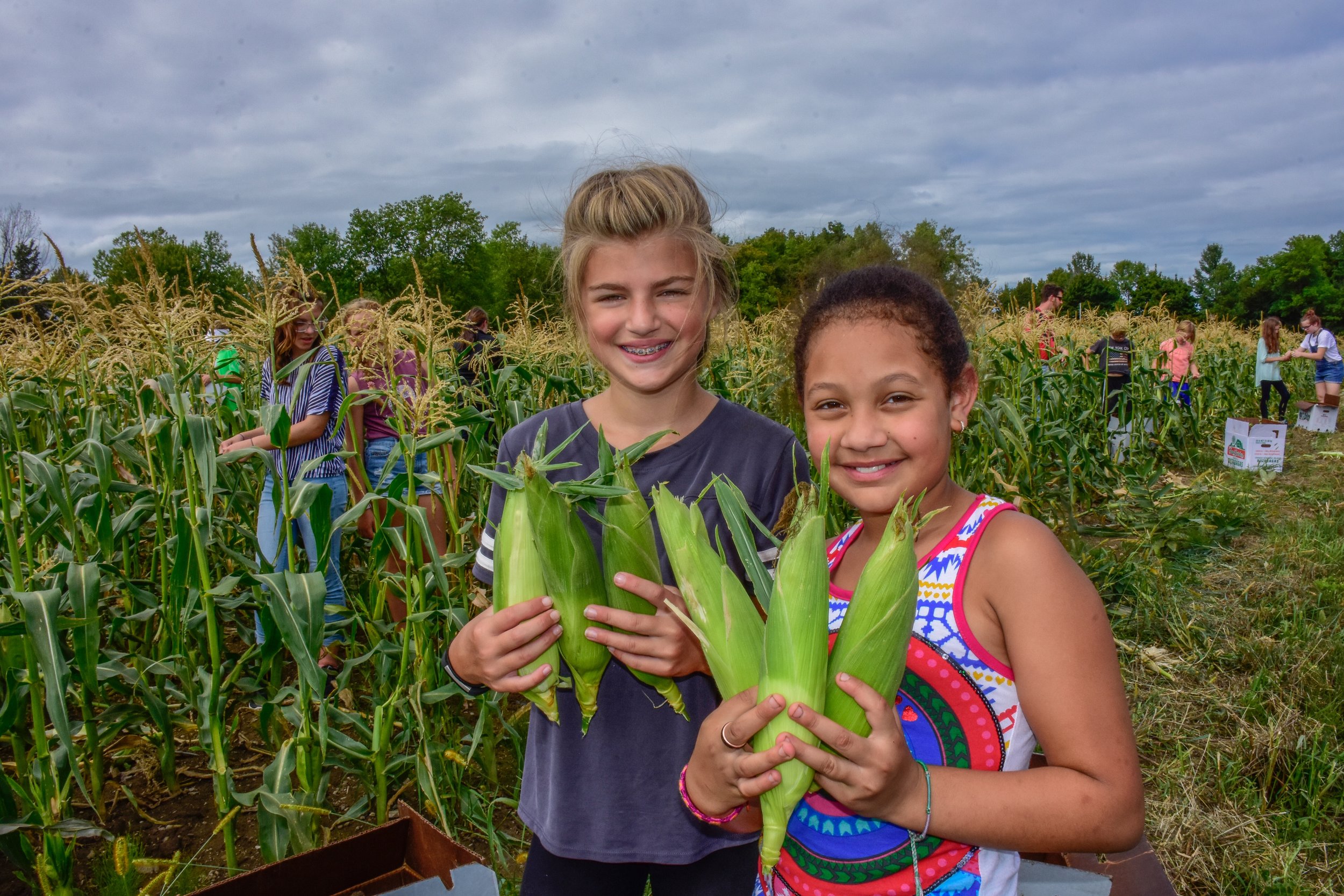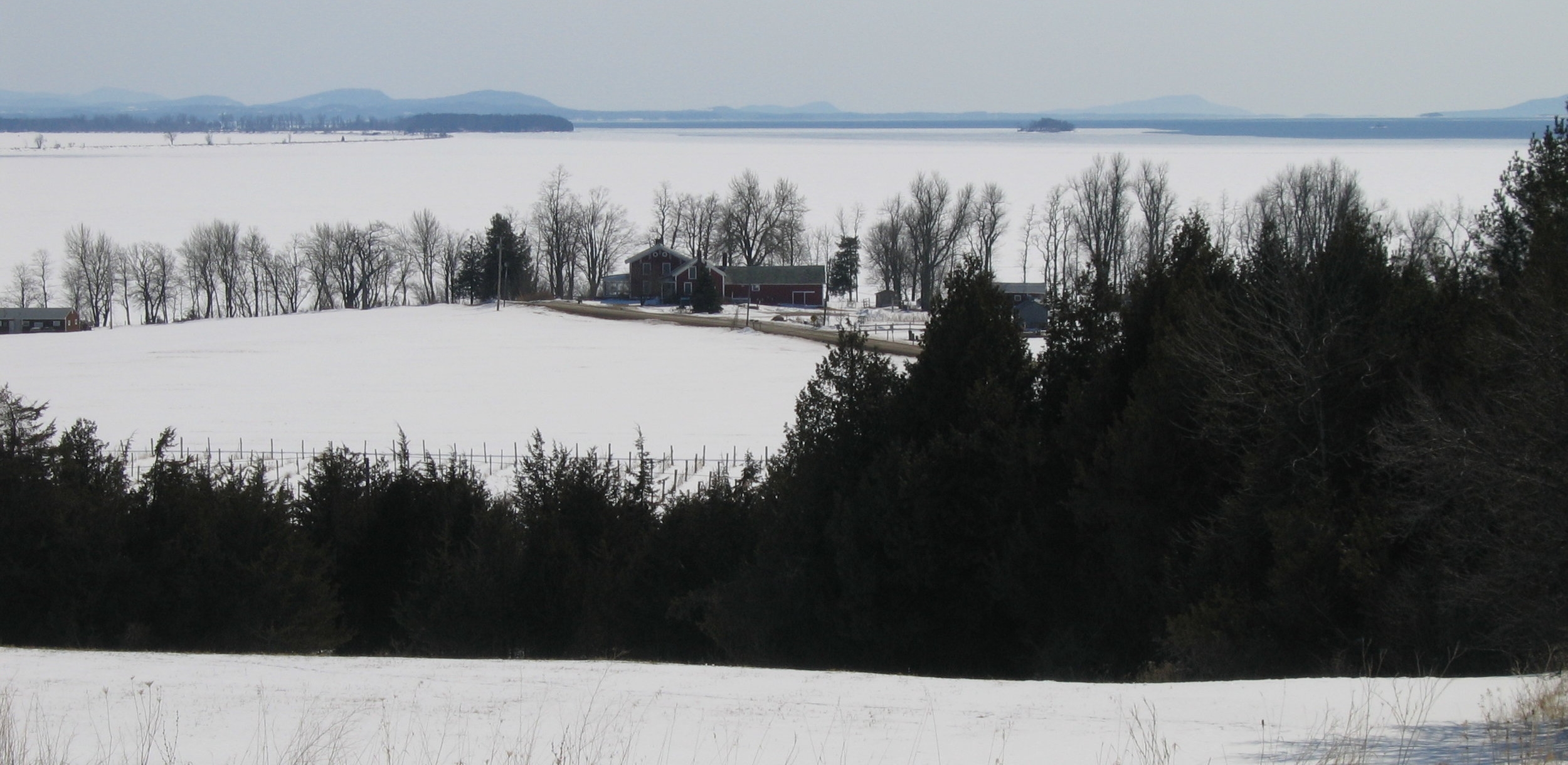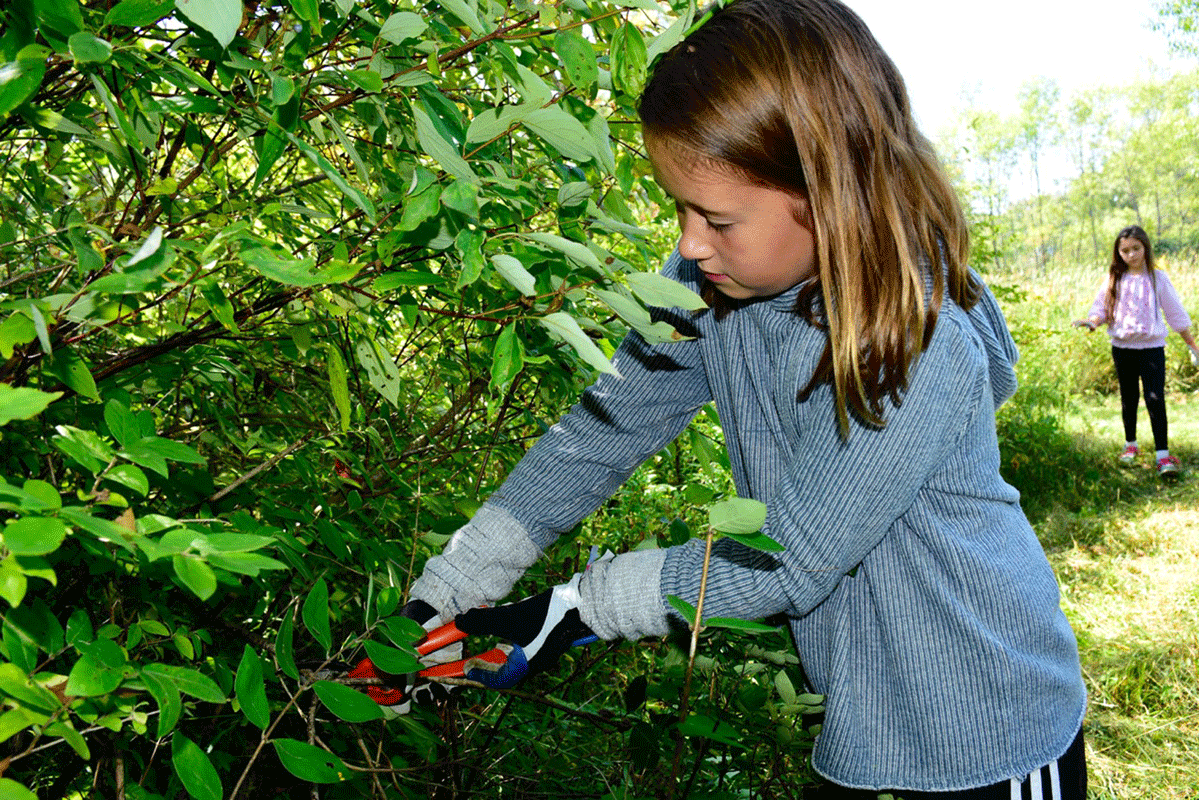Community Gleaning Garden Settles In
On a warm September afternoon, South Hero Land Trust staff, board members, and volunteers gathered at the South Hero Community Gleaning Garden for a good old fashioned barn raising. Or in this case, a shed raising.
As the work party got underway the garden buzzed with activity: measuring and cutting lumber, nailing and screwing together the framing, and even harvesting peppers and tomatoes bound for local food shelves. Pretty soon it was time to raise the last wall together. Construction of the shed was the final step in settling the Gleaning Garden into its new home at the Landon Farm.
Over the last three years the garden has grown into a core land trust program, thanks to the collaboration of many partners: Kelsey and Phelan O’Connor of Pigasus Meats provide land and water for the garden (adjacent to the Landon Community Trail); the Ben & Jerry’s Foundation funded the garden’s move to its new home; SHLT board member Bob Buermann was the lead engineer for shed construction; local volunteers Steve Robinson, Dave Hobbs and Ashley Williams have been essential in plowing, planting, and weeding this summer; Peter Jenkins from the Healthy Roots Collaborative coordinates distribution of the produce to regional food shelves, and the list goes on.
A Confluence on the Land
One of our goals at the land trust is to connect people to the land in ways that are meaningful to them, whether they enjoy recreating outdoors, working on a farm or in a woodlot, or eating local food. At a recent event at the garden, Emily Alger, SHLT Executive Director, opened her arms to encompass the land around her: “this is where all our programs come together.”
As she shared with the group, this place is a confluence of our programs and values. It is located on the conserved Landon Farm * (home of Pigasus Meats), next to the trailhead of the Landon Community Trail, with Round Pond State Park just across the road. The land here combines vital wildlife habitat, a thriving farm business, public access trails through the woods and to the shoreline, and a large wetland complex contributing to flood resilience and water protection in Lake Champlain.
Now home to our gleaning garden, it’s also a place where people come together to grow food for their neighbors and a lab space for outdoor education programs.
Community Conservation
Collaboration is a core value of SHLT, and the Gleaning Garden project is a great place to see that value in action. It’s a project that steps beyond a traditional conservation project, into what we call community conservation. As a community conservation organization, we work with diverse partners to address the most pressing issues facing our community (like climate change, racial and socioeconomic inequity, mental health, and barriers to accessing healthy food) with land based solutions.
This month the garden team, including volunteers, partners, and SHLT staff, are back to harvest the final rows of cabbage and fall greens, bound for the Grand Isle Food Shelf, C.I.D.E.R, and migrant farmworker food boxes assembled by the Healthy Roots Collaborative. The new home for the gleaning garden at Pigasus Meats, and shed for tools, are already making it possible for us to grow more food and take better care of our public access trails. It may only be 60 square feet of land and a small shed, but with the help of our partners and volunteers, it’s enough to make a difference in our community.
*The Landon Farm was originally conserved in 2003 by four partners: SHLT, Vermont Land Trust, Lake Champlain Land Trust, and the Nature Conservancy, with funding from the Vermont Housing & Conservation Board (and many others).
